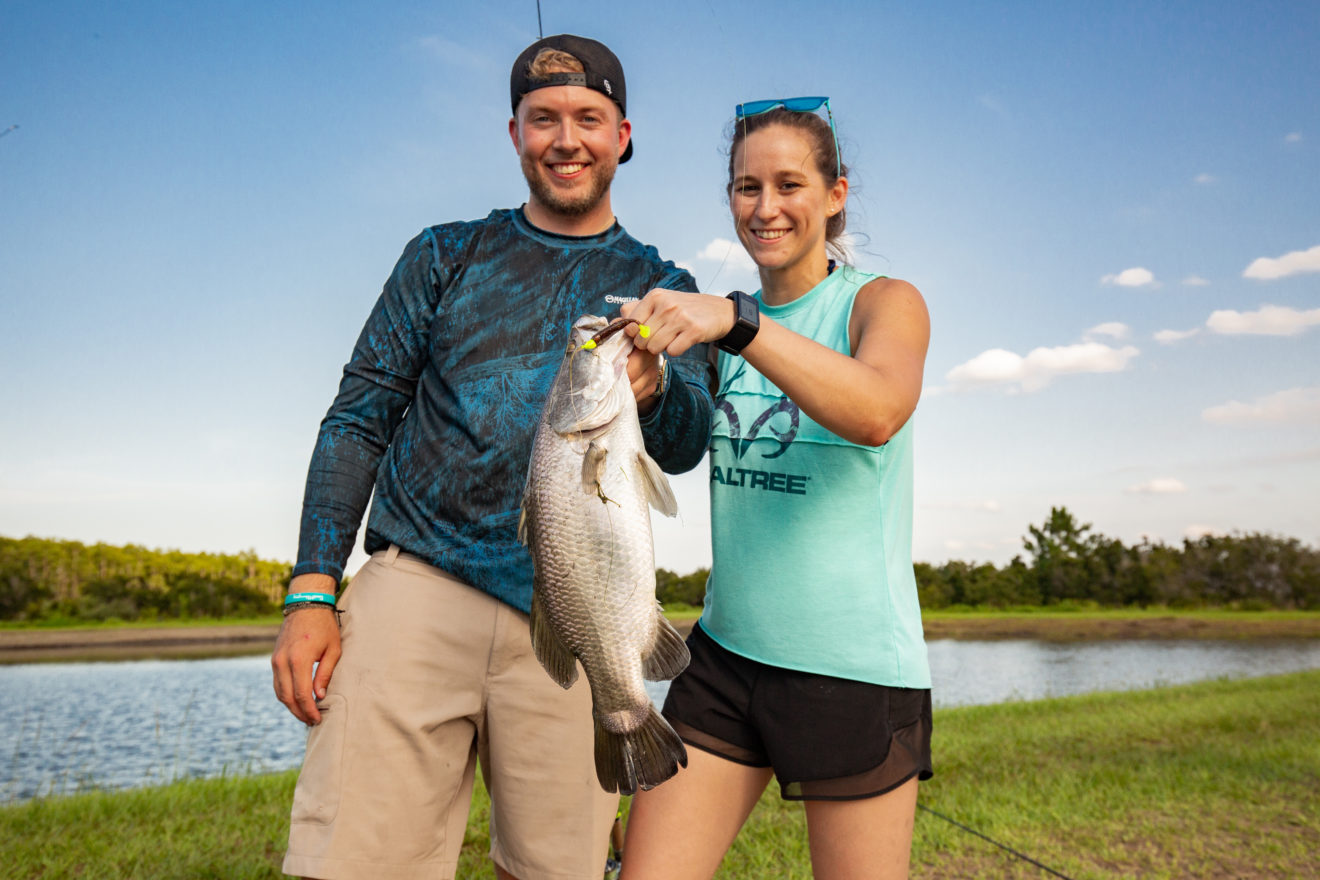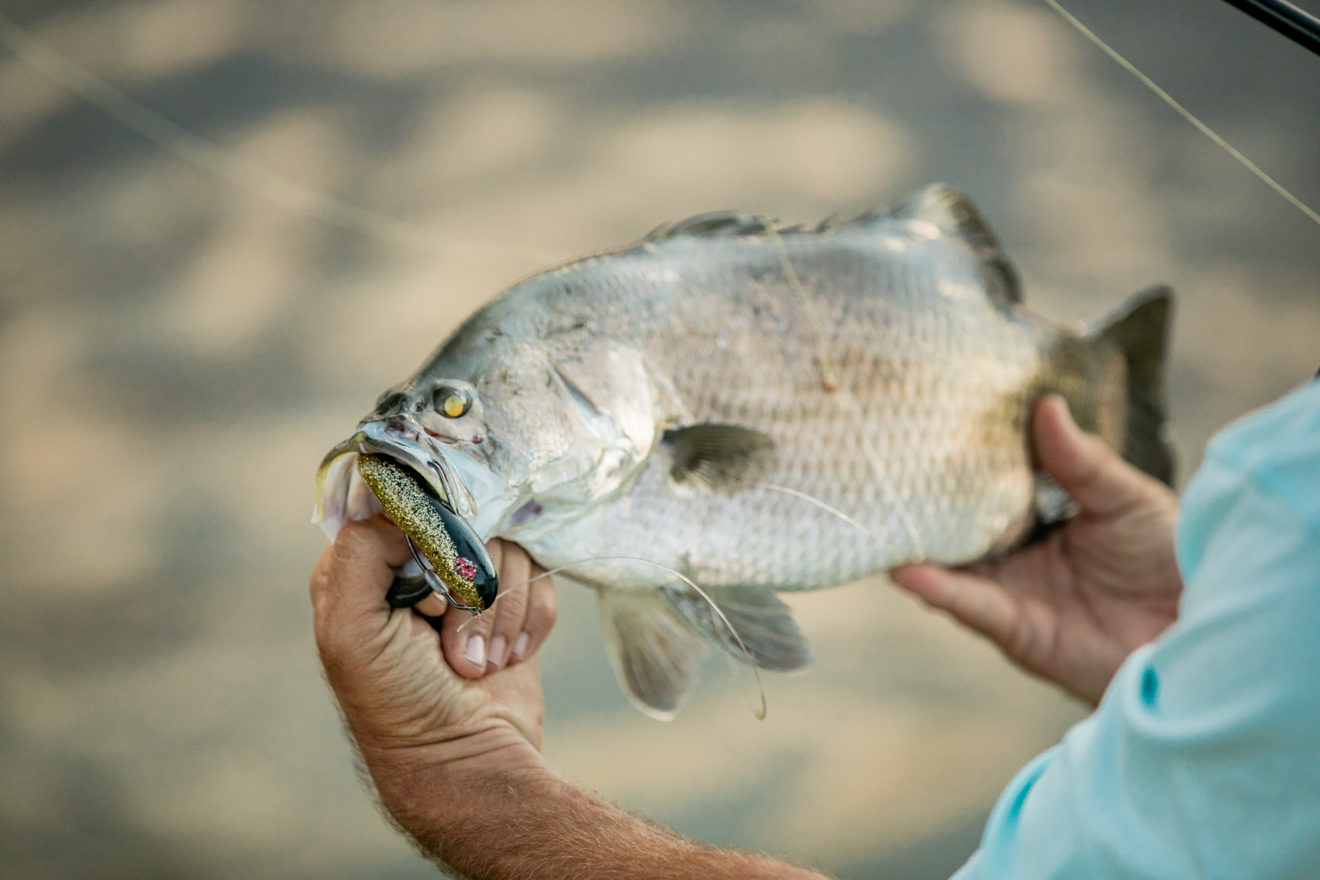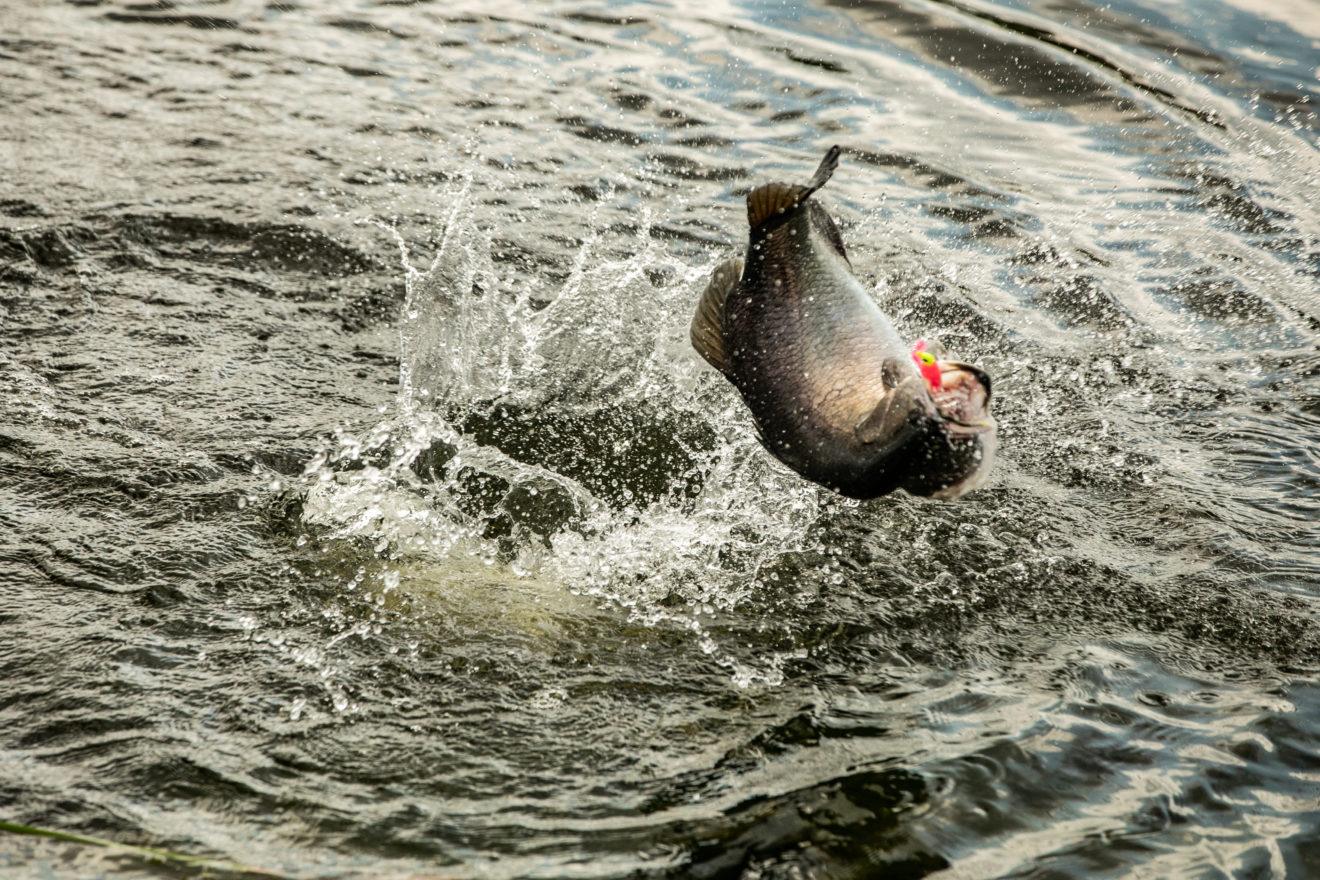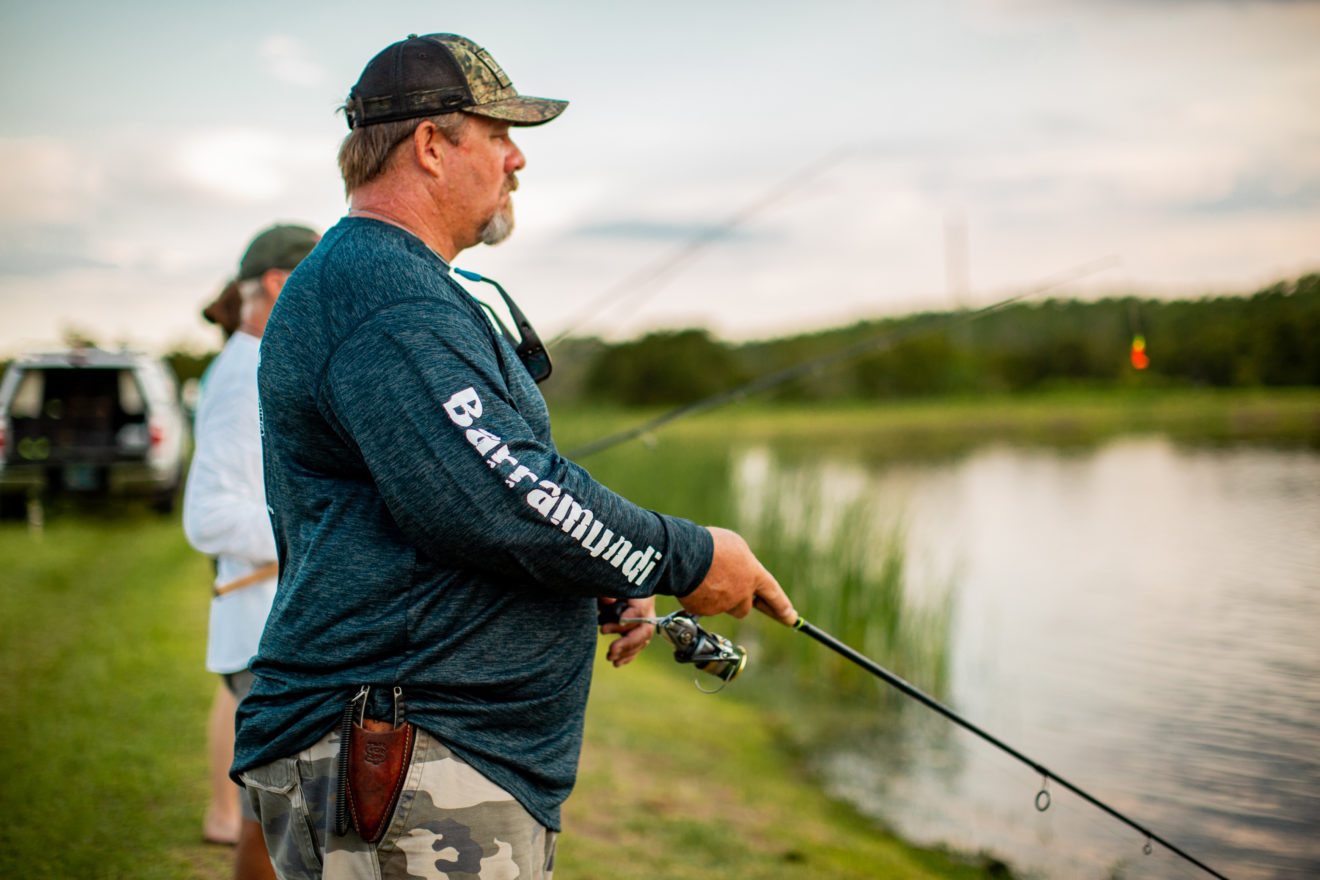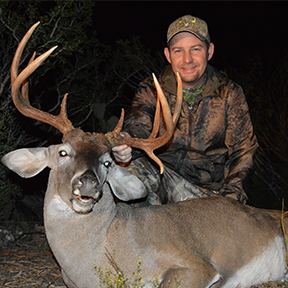Barramundi in the Sunshine State
Twitching the small DOA topwater across the water’s surface, the lure is engulfed in an explosion of water that flings it on its side. A second wave eventually devours it out of sight. The spinning reel’s drag squeals. After a five minute tug-of-war, a thick purple-hued fish reminiscent of a snook and a tripletail emerges from the water.
“I told you these fish were the real deal,” said Byron Hennecy, owner of Osceola Outback Adventures in St. Cloud, Fla., where anglers can Fish the Pit for these Australian barramundi.
On our second cast, we both doubled with a pair of solid ten pounders.
“They’ll bite like this all day long from spring through summer,” he laughed as we wrestled the fish from tangling with each other. “Pound for pound they’re one of the best fighting fish in the world.”
These super-exotics from Australia possess several of the top characteristics of North America’s most-sought-after sportfish. With a ravenous appetite similar to a post-spawn bass coupled with the power of a snook, they take to the air like tarpon once hooked. Best of all, you don’t need an airline ticket to Sydney to catch one.
Located in Central Florida, tucked away off a quiet dirt road, this small fish farm has the unique distinction of being the only licensed barramundi fishing operation in the state of Florida.
“We’re the only location in the northern and western hemispheres of the world where anglers can legally fish for barramundi,” Hennecy said. “We run a catch-and-release fish farm stocked with barramundi for both market food and commercial fishing.
Osceola Outback Adventures is licensed for restricted species and regulated by the Florida Game and Fish Commission and Department of Agriculture.
Similar to snook, barramundi are protandric hermaphrodites, which means by age four, they undergo a gender-bending metamorphosis that converts them from male to female. In Australia, they thrive in the warm estuaries and lagoons of the Outback in temperatures ranging from 78−85 degrees Fahrenheit, making Florida’s tropical climate an optimal location for farming.
Wildly popular as a food fish in Australia and throughout the Indo-Pacific region of the world, they’re prized in the aquaculture industry for their ease of rearing and table fare quality. With half the calories of salmon, they contain roughly 34 grams of lean protein in each six-ounce serving and are packed with Omega-3 fatty acids.
In the wild, they can reach weights of over a hundred pounds, but within the Florida impoundments, Hennecy estimates their maximum size around fifty pounds. Enhanced on a daily intake of high protein dry pelleted feed, they grow at an accelerated rate without the use of outside forage.
“Rearing them on dry feed without live baitfish ensures they receive optimum nutrition and will continue striking artificial lures,” said Hennecy.
So what does that mean for visiting guests to the farm?
“Basically, a lot of drag squealing, sore forearms, and chafed thumbs,” he joked.
Charters are generally booked as half days of fishing. Still, during my visit, I caught upwards of fifty fish in less than two hours, leaving me physically exhausted, yet quite satisfied knowing I’d gotten more than my money’s worth.
“I told you these fish were insane,” Hennecy laughed, as we took a break from the action to grab a cold drink. “You can throw Gambler EZ swimmers, Rat-L-Traps, DOA, topwater–it doesn’t matter. There’s nothing they won’t beat the paint off of.”
Gear
Guests can bring their own tackle or use what’s provided as part of the chartered service.
“We typically outfit guests with a 7 to 7’6” Lew’s Med Heavy Fast Action spinning rod matched with a 4000 series spinning reel spooled with 30lb. PowerPro braided line and tipped with a two-foot section of 50-pound Ande mono shock leader,” he said. “Barra have a mouth similar to snook with wicked razor-sharp gill plates, so make sure if you bring your own gear to use minimum 40-pound mono or fluorocarbon leader.”
While these barramundi will strike most anything thrown at them, Hennecy doesn’t allow the use of treble hooks and requires that barbs be pressed down on all hooks.
“If you’d like to bring your own lures, please make sure to change out your treble hooks with circle or J hooks, or we can do it for you as well. This is to ensure the safe catch and release of the fish.”
For booking information Contact:
Osceola Outback Adventures
Welcome to Osceola Outback
email: bkhennecy@gmail.com
+1 (407)-908-3216
Dustin spent his childhood exploring the bass-rich ponds that once blanketed the Central Florida landscape. At age 16 he headed east to hone his skills on redfish and sea trout in the famous Mosquito Lagoon. After high school He graduated with a B.S. Degree in Environmental Science began his career as a Senior Environmental Engineer while also traveling the U.S. as a freelance outdoor writer in search of fishing and hunting adventures. Over the past decade hundreds of Dustin’s works have been published in numerous well known travel, fishing, hunting and outdoor publications throughout the United States, Australia, and the United Kingdom.


